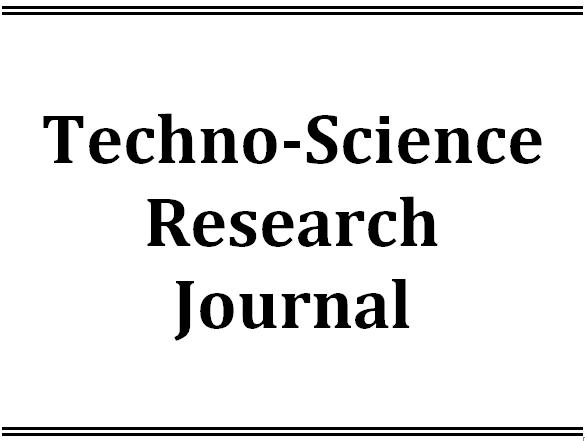Latest Issue
Empowering Education with Online Khmer Handwritten Text Recognition for Teaching and Learning Assistance
Published: August 30,2025Undergraduate Student Dropout Prediction with Class Balancing Techniques
Published: August 30,2025Status of Seawater Quality at Koh Rong Island, Sihanoukville, Cambodia
Published: August 30,2025Low-Complexity Detection of Primary Synchronization Signal for 5G New Radio Terrestrial Cellular System
Published: August 30,2025Word Spotting on Khmer Printed Documents
Published: August 30,2025Tuning Hyperparameters Learning Rate and Gamma in Gym Environment Inverted Pendulum
Published: August 30,2025Examining Passenger Loyalty in Phnom Penh Public Bus System: A Structural Equation Modelling Approach
Published: August 30,2025Prediction on Load model for future load profile of Electric Vehicle charging demand in Phnom Penh
Published: August 30,2025Economic Study on Integrating PV-DG with Grid-Tie: Case Study in Cambodia
Published: August 30,2025Flow Alteration under Land Use Impact in Sen River Basin of the Tonle Sap Lake Basin
-
1. Faculty of Hydrology and Water Resources Engineering, Institute of Technology of Cambodia, Russian Federation Blvd., P.O. Box 86, Phnom Penh, Cambodia
Received: January 20,2022 / Revised: / Accepted: March 31,2022 / Available online: June 30,2022
The expansion of agricultural land, especially for commercial crops, and deforestation caused by ever-increasing domestic and social-economic development have influenced the streamflow and altered water resources in the Sen River, one of the largest tributaries of the Tonle Sap Lake in Cambodia. The objective of this study was to examine the streamflow under land use change by using Supervised Land Use Maps generated from satellite images. Landsat 7 (ETM+) images for year 2009 and Landsat 8 (OLI) images for year 2015 and year 2020 were supervised classification to extract information on changes in land use by using ArcGIS 10.4.1 interface version. In this study, SWAT (Soil Water Assessment Tool) hydrological model is used to determine the effect of land use change on hydrological alteration in the Sen River Basin. The results showed that the SWAT model adjusted very well to the basin based on calibration and validation results. For land use change, most parts of the forest land were converted into agricultural land between 2009 and 2020, increasing by 14% (2009-2015), 33.5% (2015-2020) and 47% (2009-2020). In addition, it was observed that the land use changes led to increasing in 1-day, 3-day, 7-day, 30-day, and 90-day maximum and minimum flows. The monthly flows under land use changes ranged between -2% and 23%, which the increase of flow changes mostly occurred in the dry season. Based on these modeling results, the conversion of forest land to agricultural land was recognized as most LULC changes occurred, increasing streamflow, the risk of flooding and drought. This study could be beneficial to understand the effects of LULC change on the streamflow and help improve flood and drought control and water resource management planning in the Sen River Basin.

